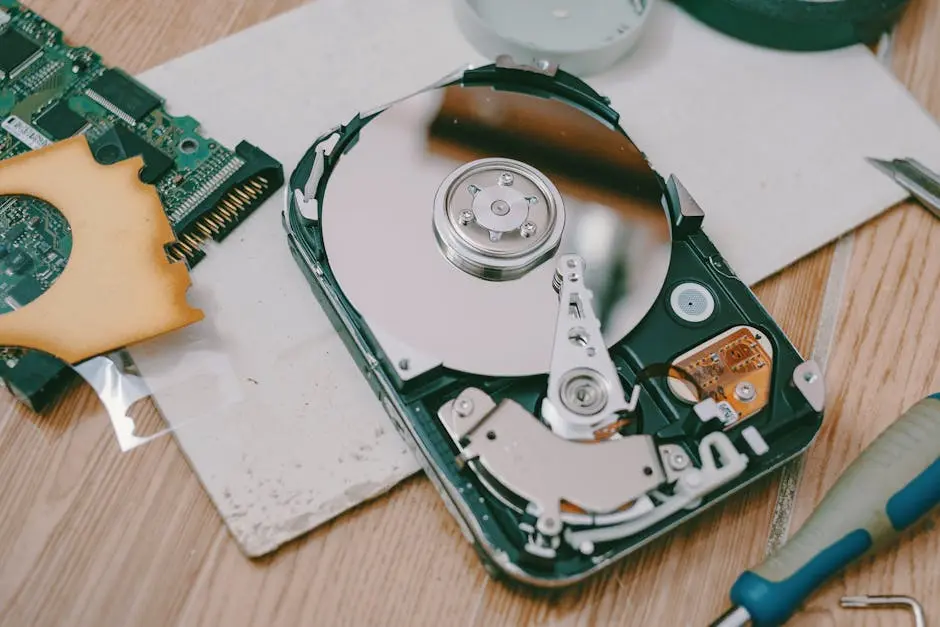If you’ve ever experienced a crashed hard drive, you know how frustrating and frightening it can be. The good news is that data recovery might be able to help you retrieve lost files. In this blog, we’ll explore how data recovery works, what you can do to potentially save your data, and when to seek professional help.

Understanding Hard Drive Failures
Learn about the different types of hard drive failures and what might cause them.
Hard drives can fail for several reasons, ranging from mechanical failure to logical corruption. Mechanical failures are often caused by physical damage to the drive, such as a head crash or motor failure. On the other hand, logical failures can occur due to software issues, accidental deletions, or corruption caused by malware.
Understanding the nature of the failure is crucial. For instance, a mechanical issue might mean that the data is still intact but simply can’t be accessed without specialized equipment. Meanwhile, logical issues can sometimes be fixed with software solutions and may allow you to recover files without much hassle.
In short, knowing the types of hard drive failures helps you determine the best course of action. Whether it’s mechanical or logical, recognizing the signs can save you time and potentially recover your precious data.
Signs Your Hard Drive May Be Crashed
Identify the warning signs that indicate your hard drive is in trouble before it’s too late.
Keep an eye out for unusual sounds coming from your hard drive, such as clicking, grinding, or whirring. These noises can be indicators of severe mechanical issues. Simple errors, like files failing to open or frequent crashes, can also be a red flag.
Additionally, if your computer begins to run significantly slower than usual, it may be working harder to read from a failing disk. This slowdown can lead to frustration, but it could also signal that immediate action is necessary. Regular backup practices help mitigate data loss during such downturns.
Ultimately, recognizing these signs can be the difference between a minor inconvenience and significant data loss. If you suspect something is wrong, act quickly to evaluate the issue before it escalates.
Basics of Data Recovery
Get an overview of how data recovery works and the methods involved in retrieving lost data.
Data recovery encompasses a variety of techniques aimed at restoring lost information from damaged or corrupted storage devices. This process can involve either software-based recovery tools, which are particularly effective in cases of logical failure, or hardware-based methods where physical components of the drive need repair.
Software recovery often involves scanning the drive for lost files and using algorithms to reconstruct damaged data. This can be a successful approach when the drive isn’t physically damaged. In contrast, hardware recovery requires specialized skills and tools, as it entails opening the hard drive in a controlled environment to avoid further contamination or damage.
Understanding these methods allows you to know what to expect if you decide to pursue data recovery. Knowing whether you can attempt a DIY solution or if you must engage professional help is key to efficient recovery.
DIY Recovery Steps
Explore some do-it-yourself approaches to recover your data safely at home.
Before diving into software solutions, ensure you’ve stopped using the affected system or drive immediately. Continued use can overwrite lost files, making recovery much more difficult. Once you create a safe environment, consider seeking trustworthy data recovery software that fits your needs.
Remember, patience is key! Running a scan may take a while, especially if the drive is large or heavily fragmented. Once the software completes its scan, carefully review the recoverable files and choose what you need. Restore to a different drive to prevent any potential overwriting of further data.
Taking these DIY steps can empower you and save money, but keep in mind that complex failures may still require professional assistance. Don’t hesitate to turn to experts if you feel overwhelmed!
When to Seek Professional Help
Understand the situations where it’s best to consult a professional data recovery service.
If your hard drive is making strange noises or has suffered physical damage, this signals a serious issue that requiresprofessional attention. Attempting to fix such problems without expertise can often worsen the situation, leading to irreversible data loss.
Additionally, if you’ve tried DIY recovery methods to no avail, it may be time to call in the professionals. They have specialized tools and experience that can make a world of difference in successful data retrieval.
In essence, knowing when to seek professional help is crucial. Trust your instincts: if your data is valuable, don’t hesitate to consult an expert.
Preventing Future Data Loss
Discover tips and best practices to avoid hard drive crashes and keep your data safe.
Regular backups are your best defense against losing important files. Use a combination of local and cloud storage solutions to ensure you always have access to your data, even if a hard drive failure occurs.
Another effective prevention strategy is to monitor the health of your hard drive using specific tools. Many programs can alert you to potential issues before they escalate. Keeping your software up-to-date is also vital, as manufacturers frequently release updates that can improve performance and address vulnerabilities.
Overall, focusing on these preventative measures not only protects your data but also offers peace of mind, knowing that you’re being proactive about your digital assets. Avoiding hard drive crashes is possible when you apply the right strategies!
Wrapping It Up
In summary, data recovery can be a viable solution for retrieving files from a crashed hard drive, but it’s crucial to understand the options available to you. With the right approach and tools, you may be able to recover your important documents and memories. Remember, if in doubt, don’t hesitate to consult a professional data recovery service.